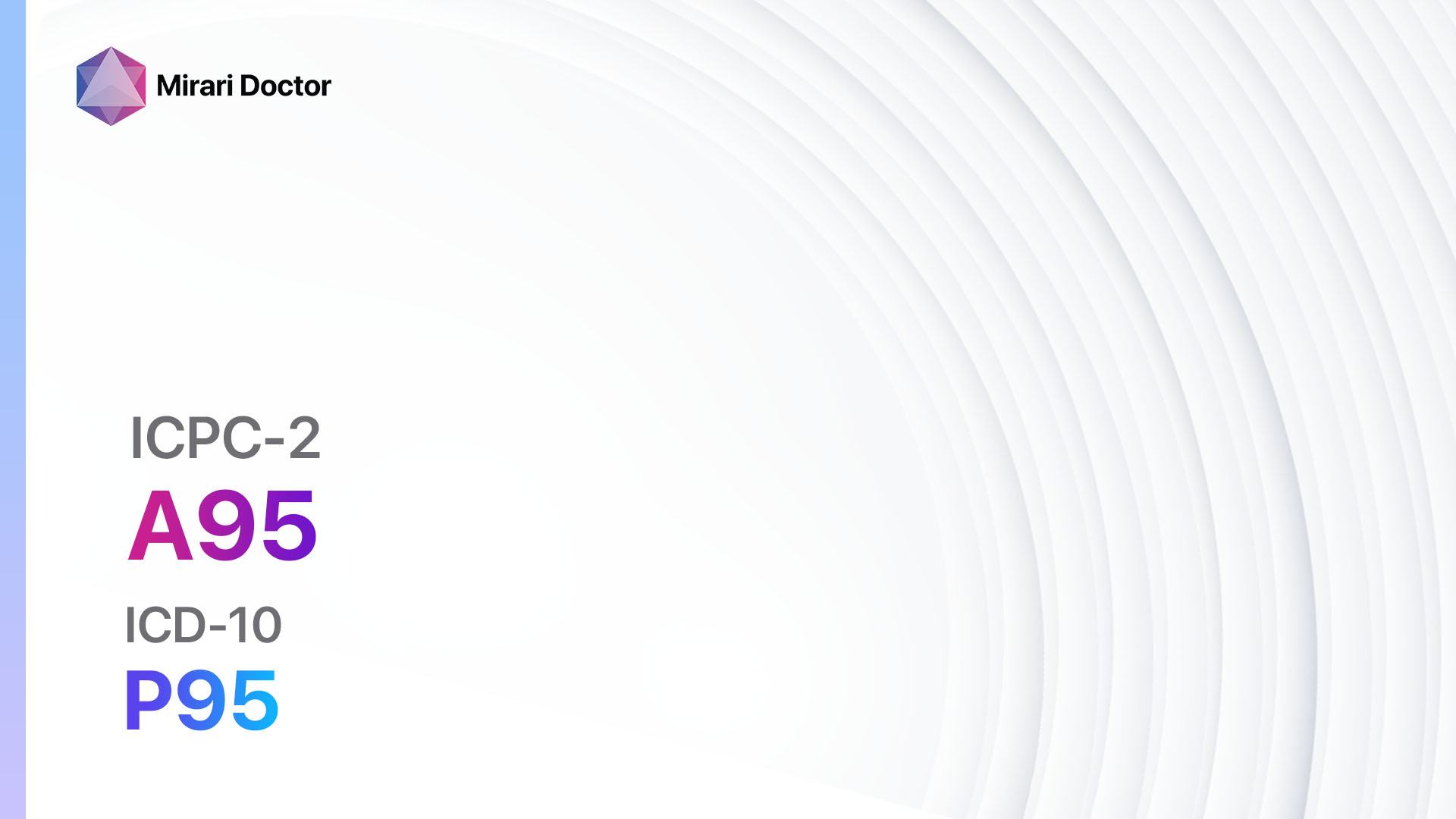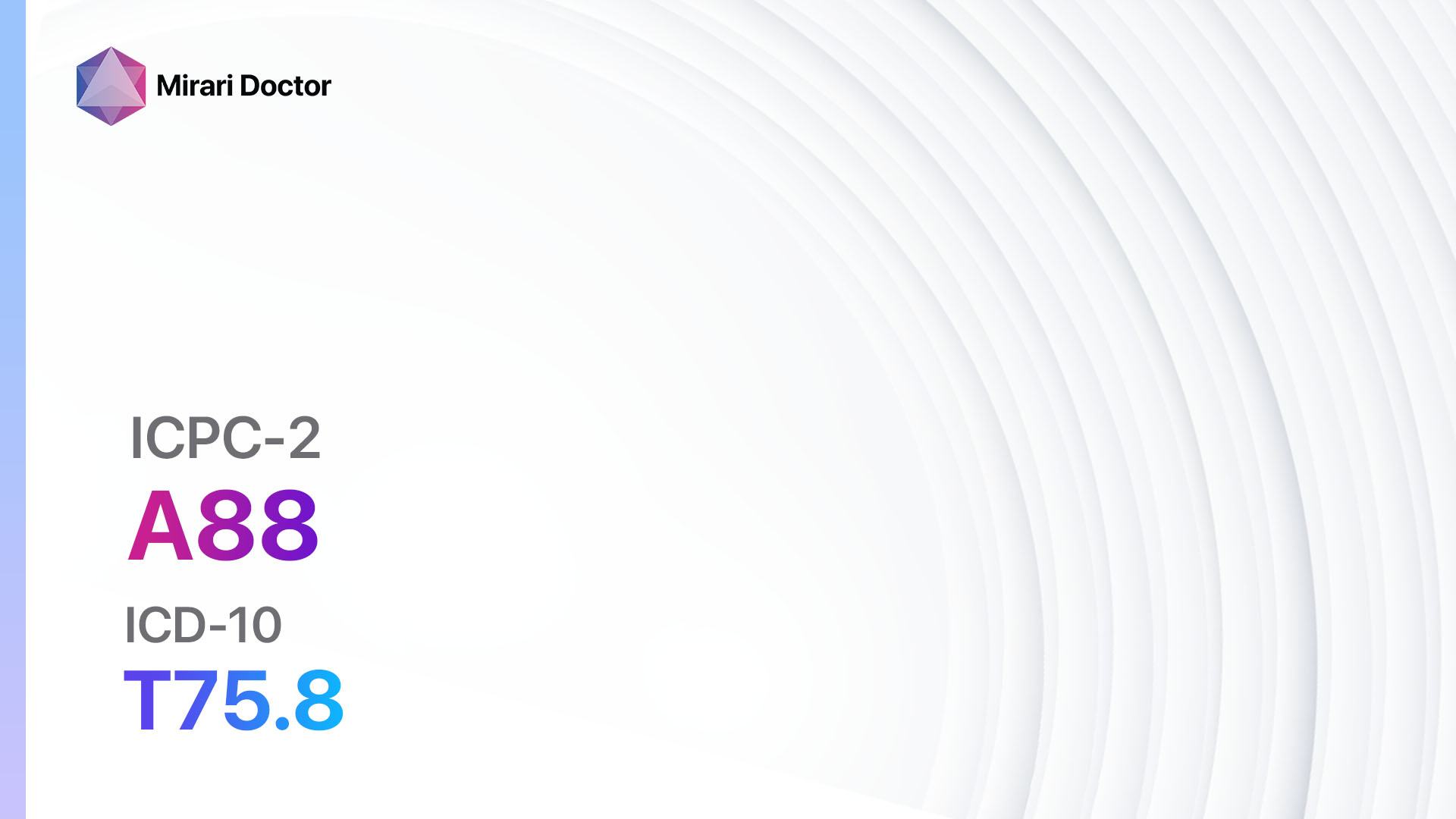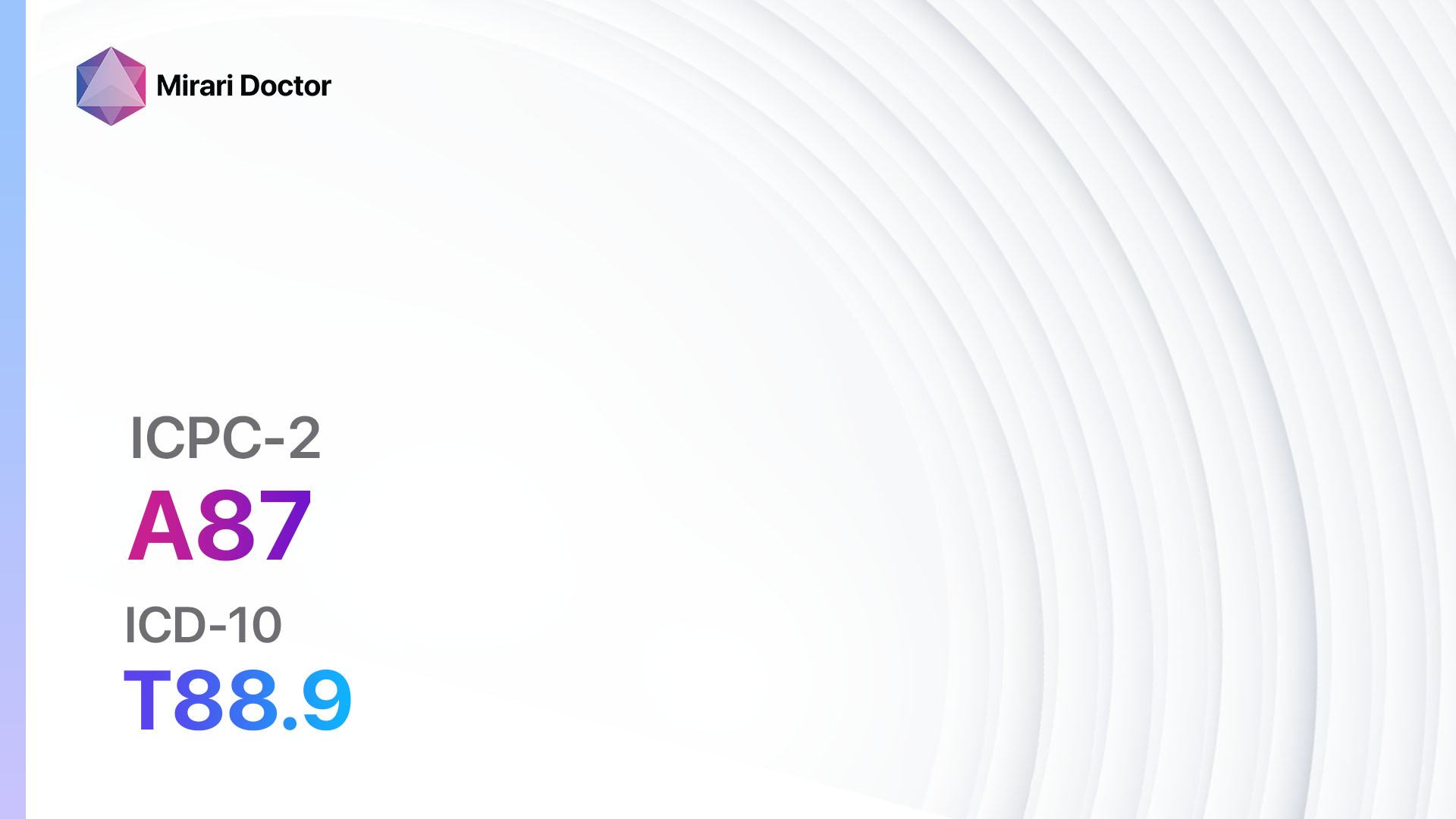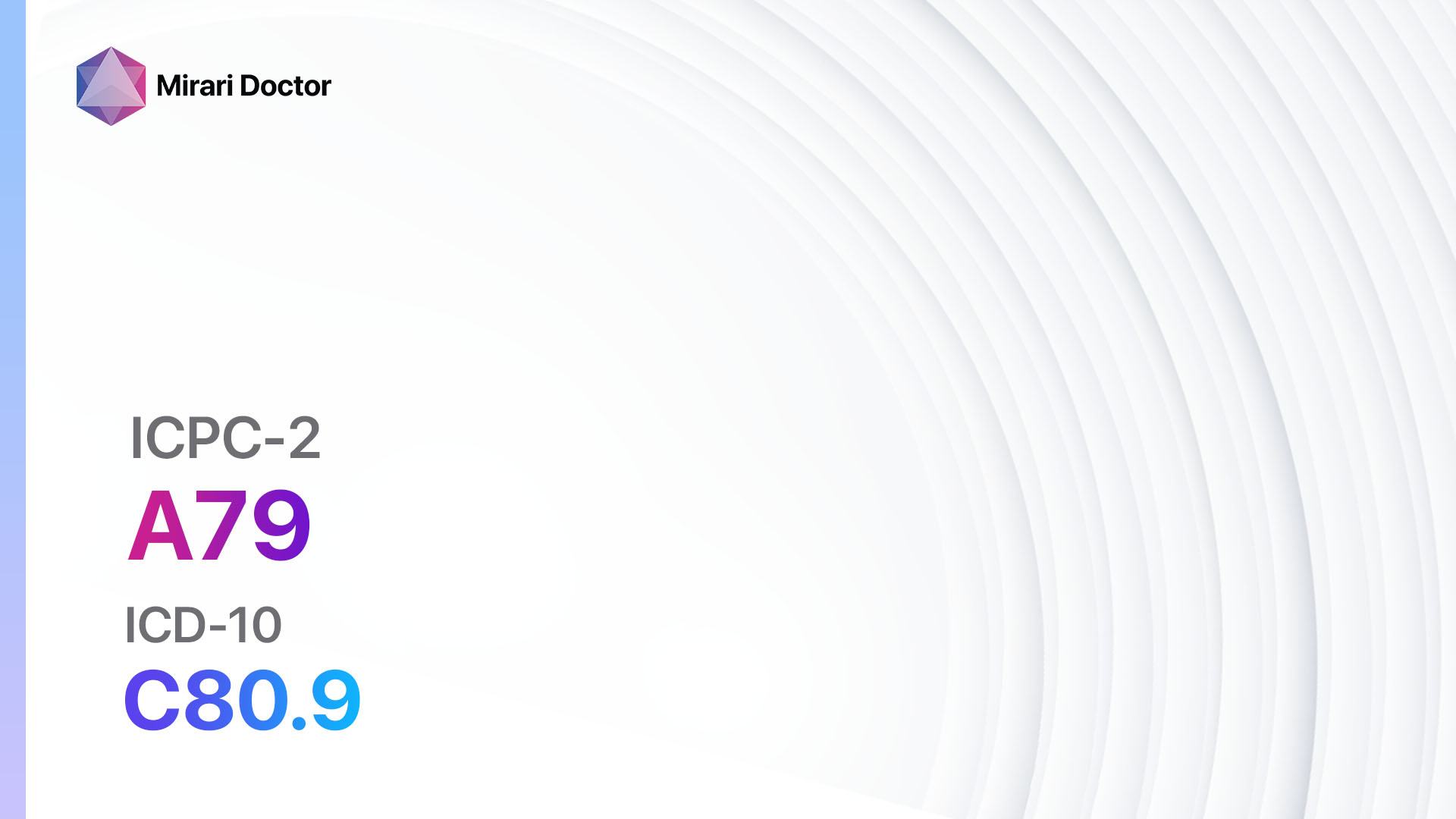
Introduction
General symptom/complaint other refers to a broad category of symptoms that do not fit into specific disease classifications[1]. These symptoms can vary widely and may be indicative of underlying medical conditions[2]. The aim of this guide is to provide an overview of the diagnostic steps, possible interventions, and lifestyle modifications that can be considered for patients presenting with general symptoms/complaints other.
Codes
- ICPC-2 Code: A29 General symptom/complaint other
- ICD-10 Code: R68.8 Other specified general symptoms and sign
Symptoms
- Fatigue: A persistent feeling of tiredness or lack of energy[3].
- Weight loss: Unintentional loss of body weight[4].
- Fever: An elevated body temperature above the normal range[5].
- Night sweats: Excessive sweating during sleep[6].
- Generalized pain: Widespread or diffuse pain in various parts of the body[7].
- Weakness: Reduced strength or ability to perform physical activities[8].
- Dizziness: A sensation of lightheadedness or unsteadiness[9].
- Headache: Pain or discomfort in the head or neck region[10].
- Nausea: A feeling of queasiness or an urge to vomit.
- Abdominal pain: Discomfort or pain in the abdominal region.
Causes
- Infection: Bacterial, viral, or fungal infections can cause general symptoms such as fever, fatigue, and weight loss.
- Inflammatory conditions: Conditions like rheumatoid arthritis or lupus can cause generalized pain, fatigue, and weakness.
- Endocrine disorders: Hormonal imbalances, such as thyroid dysfunction or adrenal insufficiency, can lead to symptoms like fatigue, weight loss, and weakness.
- Psychological factors: Conditions like depression or anxiety can manifest as general symptoms including fatigue, weight loss, and headache.
- Medications: Certain medications may have side effects that cause general symptoms, such as dizziness or nausea.
Diagnostic Steps
Medical History
- Gather information about the patient’s symptoms, including their duration, severity, and any associated factors.
- Identify any risk factors or medical conditions that may be contributing to the symptoms.
- Ask about the presence of other symptoms or complaints that may provide additional clues for diagnosis.
- Inquire about any recent changes in medications or lifestyle that may be relevant.
Physical Examination
- Perform a comprehensive physical examination to assess vital signs, general appearance, and specific signs related to the presenting symptoms.
- Palpate the abdomen for tenderness or masses that may be causing abdominal pain.
- Evaluate the head and neck region for signs of infection or inflammation that may be causing headache or generalized pain.
- Assess the cardiovascular and respiratory systems for any abnormalities that may be contributing to fatigue or weakness.
Laboratory Tests
- Complete blood count (CBC): To evaluate for signs of infection, anemia, or other blood disorders.
- Comprehensive metabolic panel (CMP): To assess organ function and detect any abnormalities that may be causing the symptoms.
- Thyroid function tests: To evaluate thyroid hormone levels and rule out thyroid dysfunction as a cause of symptoms.
- Inflammatory markers (e.g., C-reactive protein, erythrocyte sedimentation rate): To assess for signs of inflammation that may be indicative of an underlying condition.
- Urinalysis: To screen for urinary tract infections or other abnormalities.
Diagnostic Imaging
- Chest X-ray: To evaluate the lungs and assess for any abnormalities that may be contributing to symptoms.
- Abdominal ultrasound: To visualize the abdominal organs and identify any potential sources of pain or discomfort.
- CT scan or MRI: To obtain detailed images of specific body regions, such as the head or abdomen, to further investigate the cause of symptoms.
Other Tests
- Electrocardiogram (ECG): To assess heart function and rule out any cardiac abnormalities that may be causing symptoms.
- Endoscopy: To visualize the gastrointestinal tract and identify any abnormalities that may be contributing to symptoms.
- Allergy testing: To determine if allergies are causing symptoms such as headache or generalized pain.
Follow-up and Patient Education
- Schedule follow-up appointments to monitor the patient’s progress and adjust treatment as necessary.
- Provide education to the patient about their condition, including potential causes, treatment options, and lifestyle modifications that may help alleviate symptoms.
- Encourage the patient to maintain open communication with their healthcare provider and report any changes or worsening of symptoms.
Possible Interventions
Traditional Interventions
Medications:
Top 5 drugs for General symptom/complaint other:
- Analgesics (e.g., Acetaminophen, Ibuprofen):
- Cost: Generic versions can be $3-$10/month.
- Contraindications: Allergy to the medication, active gastrointestinal bleeding.
- Side effects: Upset stomach, allergic reactions.
- Severe side effects: Liver damage, kidney damage.
- Drug interactions: Blood thinners, other pain medications.
- Warning: Do not exceed recommended dosage.
- Antiemetics (e.g., Ondansetron, Metoclopramide):
- Cost: Generic versions can be $10-$50/month.
- Contraindications: Allergy to the medication, intestinal obstruction.
- Side effects: Headache, dizziness.
- Severe side effects: Irregular heart rhythm, muscle spasms.
- Drug interactions: Serotonin-modulating medications, certain antibiotics.
- Warning: Use with caution in patients with a history of heart conditions.
- Antipyretics (e.g., Acetaminophen, Ibuprofen):
- Cost: Generic versions can be $3-$10/month.
- Contraindications: Allergy to the medication, severe liver disease.
- Side effects: Upset stomach, allergic reactions.
- Severe side effects: Liver damage, kidney damage.
- Drug interactions: Blood thinners, other pain medications.
- Warning: Do not exceed recommended dosage.
- Antidepressants (e.g., Sertraline, Escitalopram):
- Cost: Generic versions can be $10-$50/month.
- Contraindications: Allergy to the medication, concurrent use of monoamine oxidase inhibitors (MAOIs).
- Side effects: Nausea, headache, insomnia.
- Severe side effects: Suicidal thoughts, serotonin syndrome.
- Drug interactions: MAOIs, certain pain medications.
- Warning: May take several weeks to achieve full effect.
- Antibiotics (e.g., Amoxicillin, Azithromycin):
- Cost: Generic versions can be $10-$50/month.
- Contraindications: Allergy to the medication, severe liver disease.
- Side effects: Upset stomach, diarrhea.
- Severe side effects: Severe allergic reactions, Clostridium difficile infection.
- Drug interactions: Certain blood thinners, antacids.
- Warning: Take the full course of antibiotics as prescribed.
Alternative Drugs:
- Antihistamines (e.g., Loratadine): Useful for relieving symptoms of allergies, such as headache or generalized pain.
- Muscle relaxants (e.g., Cyclobenzaprine): Can help alleviate muscle pain or tension associated with symptoms.
- Antacids (e.g., Calcium carbonate): May provide relief from symptoms related to gastrointestinal discomfort.
- Corticosteroids (e.g., Prednisone): Used in specific cases where inflammation is suspected as the cause of symptoms.
- Antivirals (e.g., Oseltamivir): Prescribed for viral infections that may be causing symptoms.
Surgical Procedures:
- Surgical intervention is not typically indicated for general symptoms/complaints other. However, in cases where an underlying condition is identified that requires surgical management, appropriate procedures will be recommended based on the specific diagnosis.
Alternative Interventions
- Acupuncture: May help alleviate symptoms such as pain, fatigue, or headache. Cost: $60-$120 per session.
- Chiropractic care: Manipulative therapy that may provide relief from musculoskeletal symptoms. Cost: $50-$200 per session.
- Herbal supplements: Some herbal remedies, such as ginger or chamomile, may help alleviate symptoms. Cost: Varies depending on the specific supplement.
- Meditation or mindfulness practices: Can help reduce stress and improve overall well-being. Cost: Free or minimal cost for instructional materials.
- Yoga or tai chi: Gentle exercises that can improve flexibility, strength, and relaxation. Cost: Varies depending on the location and instructor.
Lifestyle Interventions
- Regular exercise: Engaging in physical activity can help improve overall health and alleviate symptoms. Cost: Free or minimal cost for home-based exercises or gym memberships.
- Healthy diet: Consuming a balanced diet rich in fruits, vegetables, and whole grains can support overall well-being. Cost: Varies depending on individual food choices and dietary restrictions.
- Stress management techniques: Practicing stress reduction techniques, such as deep breathing or meditation, can help alleviate symptoms. Cost: Free or minimal cost for instructional materials.
- Sufficient sleep: Ensuring an adequate amount of sleep can improve energy levels and overall health. Cost: Free.
- Avoidance of triggers: Identifying and avoiding triggers, such as certain foods or environmental factors, can help alleviate symptoms. Cost: Varies depending on individual circumstances.
It is important to note that the cost ranges provided are approximate and may vary depending on the location and availability of the interventions. Patients should consult with their healthcare provider to determine the most appropriate interventions for their specific condition and financial situation.
Mirari Cold Plasma Alternative Intervention
Understanding Mirari Cold Plasma
- Safe and Non-Invasive Treatment: Mirari Cold Plasma is a safe and non-invasive treatment option for various skin conditions. It does not require incisions, minimizing the risk of scarring, bleeding, or tissue damage.
- Efficient Extraction of Foreign Bodies: Mirari Cold Plasma facilitates the removal of foreign bodies from the skin by degrading and dissociating organic matter, allowing easier access and extraction.
- Pain Reduction and Comfort: Mirari Cold Plasma has a local analgesic effect, providing pain relief during the treatment, making it more comfortable for the patient.
- Reduced Risk of Infection: Mirari Cold Plasma has antimicrobial properties, effectively killing bacteria and reducing the risk of infection.
- Accelerated Healing and Minimal Scarring: Mirari Cold Plasma stimulates wound healing and tissue regeneration, reducing healing time and minimizing the formation of scars.
Mirari Cold Plasma Prescription
Video instructions for using Mirari Cold Plasma Device – A29 General symptom/complaint other (ICD-10:R68.8)
| Mild | Moderate | Severe |
| Mode setting: 1 (Infection) Location: 0 (Localized) Morning: 15 minutes, Evening: 15 minutes |
Mode setting: 1 (Infection) Location: 0 (Localized) Morning: 30 minutes, Lunch: 30 minutes, Evening: 30 minutes |
Mode setting: 1 (Infection) Location: 0 (Localized) Morning: 30 minutes, Lunch: 30 minutes, Evening: 30 minutes |
| Mode setting: 2 (Wound Healing) Location: 0 (Localized) Morning: 15 minutes, Evening: 15 minutes |
Mode setting: 2 (Wound Healing) Location: 0 (Localized) Morning: 30 minutes, Lunch: 30 minutes, Evening: 30 minutes |
Mode setting: 2 (Wound Healing) Location: 0 (Localized) Morning: 30 minutes, Lunch: 30 minutes, Evening: 30 minutes |
| Mode setting: 7 (Immunotherapy) Location: 1 (Sacrum) Morning: 15 minutes, Evening: 15 minutes |
Mode setting: 7 (Immunotherapy) Location: 1 (Sacrum) Morning: 30 minutes, Lunch: 30 minutes, Evening: 30 minutes |
Mode setting: 7 (Immunotherapy) Location: 1 (Sacrum) Morning: 30 minutes, Lunch: 30 minutes, Evening: 30 minutes |
| Total Morning: 45 minutes approx. $7.50 USD, Evening: 45 minutes approx. $7.50 USD |
Total Morning: 90 minutes approx. $15 USD, Lunch: 90 minutes approx. $15 USD, Evening: 90 minutes approx. $15 USD, |
Total Morning: 90 minutes approx. $15 USD, Lunch: 90 minutes approx. $15 USD, Evening: 90 minutes approx. $15 USD, |
| Usual treatment for 7-60 days approx. $105 USD – $900 USD | Usual treatment for 6-8 weeks approx. $1,890 USD – $2,520 USD |
Usual treatment for 3-6 months approx. $4,050 USD – $8,100 USD
|
 |
|
Use the Mirari Cold Plasma device to treat General symptom/complaint other effectively.
WARNING: MIRARI COLD PLASMA IS DESIGNED FOR THE HUMAN BODY WITHOUT ANY ARTIFICIAL OR THIRD PARTY PRODUCTS. USE OF OTHER PRODUCTS IN COMBINATION WITH MIRARI COLD PLASMA MAY CAUSE UNPREDICTABLE EFFECTS, HARM OR INJURY. PLEASE CONSULT A MEDICAL PROFESSIONAL BEFORE COMBINING ANY OTHER PRODUCTS WITH USE OF MIRARI.
Step 1: Cleanse the Skin
- Start by cleaning the affected area of the skin with a gentle cleanser or mild soap and water. Gently pat the area dry with a clean towel.
Step 2: Prepare the Mirari Cold Plasma device
- Ensure that the Mirari Cold Plasma device is fully charged or has fresh batteries as per the manufacturer’s instructions. Make sure the device is clean and in good working condition.
- Switch on the Mirari device using the power button or by following the specific instructions provided with the device.
- Some Mirari devices may have adjustable settings for intensity or treatment duration. Follow the manufacturer’s instructions to select the appropriate settings based on your needs and the recommended guidelines.
Step 3: Apply the Device
- Place the Mirari device in direct contact with the affected area of the skin. Gently glide or hold the device over the skin surface, ensuring even coverage of the area experiencing.
- Slowly move the Mirari device in a circular motion or follow a specific pattern as indicated in the user manual. This helps ensure thorough treatment coverage.
Step 4: Monitor and Assess:
- Keep track of your progress and evaluate the effectiveness of the Mirari device in managing your General symptom/complaint other. If you have any concerns or notice any adverse reactions, consult with your health care professional.
Note
This guide is for informational purposes only and should not replace the advice of a medical professional. Always consult with your healthcare provider or a qualified medical professional for personal advice, diagnosis, or treatment. Do not solely rely on the information presented here for decisions about your health. Use of this information is at your own risk. The authors of this guide, nor any associated entities or platforms, are not responsible for any potential adverse effects or outcomes based on the content.
Mirari Cold Plasma System Disclaimer
- Purpose: The Mirari Cold Plasma System is a Class 2 medical device designed for use by trained healthcare professionals. It is registered for use in Thailand and Vietnam. It is not intended for use outside of these locations.
- Informational Use: The content and information provided with the device are for educational and informational purposes only. They are not a substitute for professional medical advice or care.
- Variable Outcomes: While the device is approved for specific uses, individual outcomes can differ. We do not assert or guarantee specific medical outcomes.
- Consultation: Prior to utilizing the device or making decisions based on its content, it is essential to consult with a Certified Mirari Tele-Therapist and your medical healthcare provider regarding specific protocols.
- Liability: By using this device, users are acknowledging and accepting all potential risks. Neither the manufacturer nor the distributor will be held accountable for any adverse reactions, injuries, or damages stemming from its use.
- Geographical Availability: This device has received approval for designated purposes by the Thai and Vietnam FDA. As of now, outside of Thailand and Vietnam, the Mirari Cold Plasma System is not available for purchase or use.
References
- Kroenke, K. (2014). A practical and evidence-based approach to common symptoms: a narrative review. Annals of Internal Medicine, 161(8), 579-586.
- Katon, W., & Sullivan, M. D. (1990). Depression and chronic medical illness. Journal of Clinical Psychiatry, 51(Suppl), 3-11.
- Sharpe, M., & Wilks, D. (2002). Fatigue. BMJ, 325(7362), 480-483.
- McMinn, J., Steel, C., & Bowman, A. (2011). Investigation and management of unintentional weight loss in older adults. BMJ, 342, d1732.
- Mackowiak, P. A., Wasserman, S. S., & Levine, M. M. (1992). A critical appraisal of 98.6 F, the upper limit of the normal body temperature, and other legacies of Carl Reinhold August Wunderlich. JAMA, 268(12), 1578-1580.
- Mold, J. W., Holtzclaw, B. J., & McCarthy, L. (2012). Night sweats: a systematic review of the literature. Journal of the American Board of Family Medicine, 25(6), 878-893.
- Croft, P., Rigby, A. S., Boswell, R., Schollum, J., & Silman, A. (1993). The prevalence of chronic widespread pain in the general population. The Journal of Rheumatology, 20(4), 710-713.
- Morley, J. E., Baumgartner, R. N., Roubenoff, R., Mayer, J., & Nair, K. S. (2001). Sarcopenia. Journal of Laboratory and Clinical Medicine, 137(4), 231-243.
- Sloane, P. D., Coeytaux, R. R., Beck, R. S., & Dallara, J. (2001). Dizziness: state of the science. Annals of Internal Medicine, 134(9 Pt 2), 823-832.
- Rasmussen, B. K., Jensen, R., Schroll, M., & Olesen, J. (1991). Epidemiology of headache in a general population—a prevalence study. Journal of Clinical Epidemiology, 44(11), 1147-1157.
Related articles
Made in USA




























